
R4M, abbreviation for Rakete, 4 kilogramm, Minenkopf, also known by the nickname Orkan due to its distinctive smoke trail when fired, was a folding-fin air-to-air rocket used by the Luftwaffe at the end of World War II.

A shell, in a military context, is a projectile whose payload contains an explosive, incendiary, or other chemical filling. Originally it was called a bombshell, but "shell" has come to be unambiguous in a military context. Modern usage sometimes includes large solid kinetic projectiles that is properly termed shot. Solid shot may contain a pyrotechnic compound if a tracer or spotting charge is used.

Ammunition is the material fired, scattered, dropped, or detonated from any weapon or weapon system. Ammunition is both expendable weapons and the component parts of other weapons that create the effect on a target.
The M549 is a High-Explosive Rocket Assisted (HERA) 155 mm howitzer round developed for use by the US Military in order to add additional range to standard howitzers, with a maximum range 30.1 km from a M198 howitzer. The projectile has two distinctive pre-assembled components—the high explosive warhead and the rocket motor, making it a form of rocket-assisted projectile. The warhead is fabricated from high fragmentation steel for increased effectiveness in terms of damage caused to target and contains a bulk-filled explosive.

The Type 10 and Type 3 rocket boosters were rocket artillery systems used by garrison troops of the Imperial Japanese Navy during the late stages of World War II in defense of island bases in the Pacific.

The 30 cm Wurfkörper 42 Spreng was an unguided spin-stabilized artillery rocket developed by Germany and used by the Wehrmacht during World War II.

The Gewehr-Granatpatrone 40 or GGP/40 for short was a shaped charge rifle grenade used by German forces during the Second World War. It was originally developed for Luftwaffe Fallschirmjäger units to provide them with a light and portable anti-tank weapon.

The AB 70-D1(Abwurfbehälter) was a cluster bomb dispenser used by the Luftwaffe during World War II.

The SB 1000 (Spezialbombe) was a luftmine used by the German Luftwaffe during World War II.
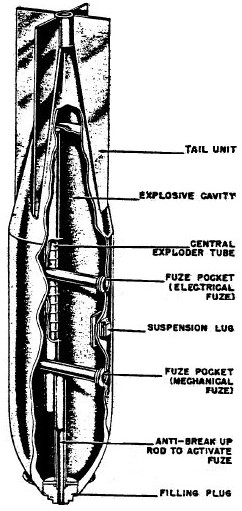
The SB 2500 (Spezialbombe) was a luftmine or aerial mine in English used by the Luftwaffe during World War II.

The SD 50 or thick walled explosive bomb in English was a fragmentation bomb used by the Luftwaffe during World War II.

The SD 70 or thick walled explosive bomb in English was a fragmentation bomb used by the Luftwaffe during World War II.
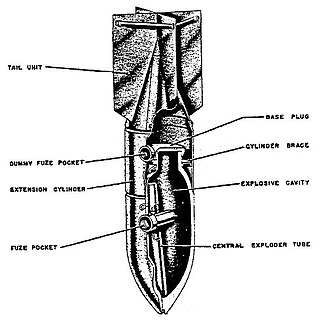
The SD 250 or thick walled explosive bomb in English was a fragmentation bomb used by the Luftwaffe during World War II.
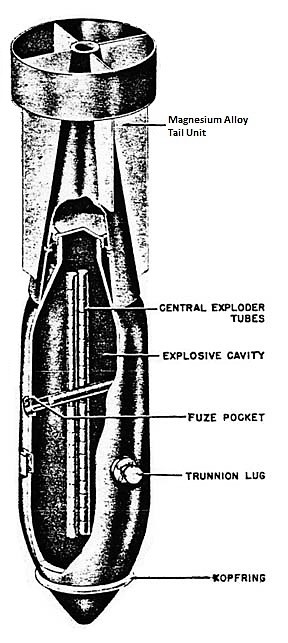
The SD 1700 or thick walled explosive bomb in English was a fragmentation bomb used by the Luftwaffe during World War II.

The PD 500 or thick walled armor-piercing explosive bomb in English was an armor-piercing bomb used by the Luftwaffe during World War II.
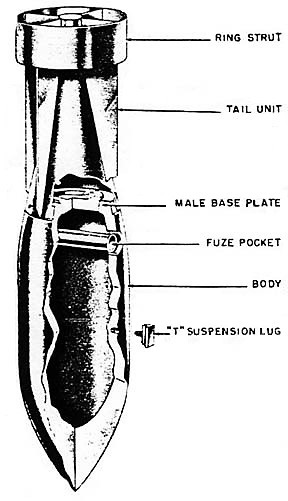
The PC 500 or cylindrical armor-piercing explosive bomb in English was a series of armor-piercing bombs used by the Luftwaffe during World War II.
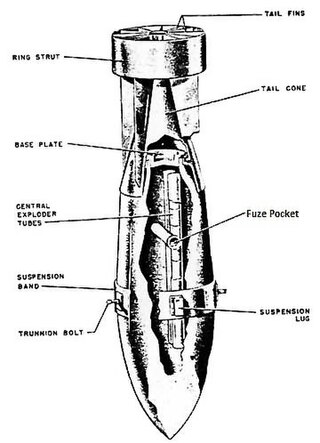
The PC 1000 or cylindrical armor-piercing explosive bomb in English was an armor-piercing bomb used by the Luftwaffe during World War II.

The PC 1400 or cylindrical armor-piercing explosive bomb in English was an armor-piercing bomb used by the Luftwaffe during World War II.

The PC 1600 or cylindrical armor-piercing explosive bomb in English was an armor-piercing bomb used by the Luftwaffe during World War II.
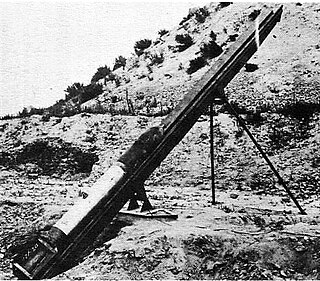
The Type 21 and Type 22 rocket-bombs were rocket artillery systems used by garrison troops of the Imperial Japanese Navy during the late stages of World War II in defense of island bases in the Pacific.





















